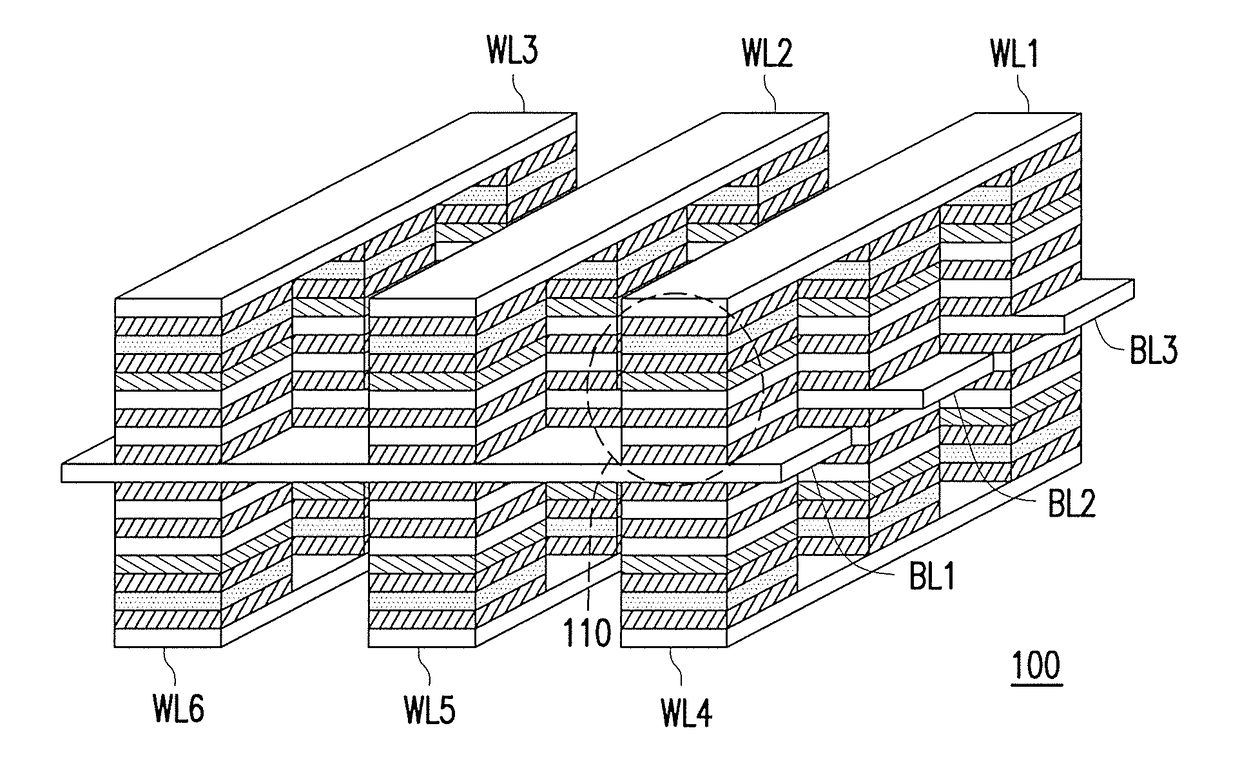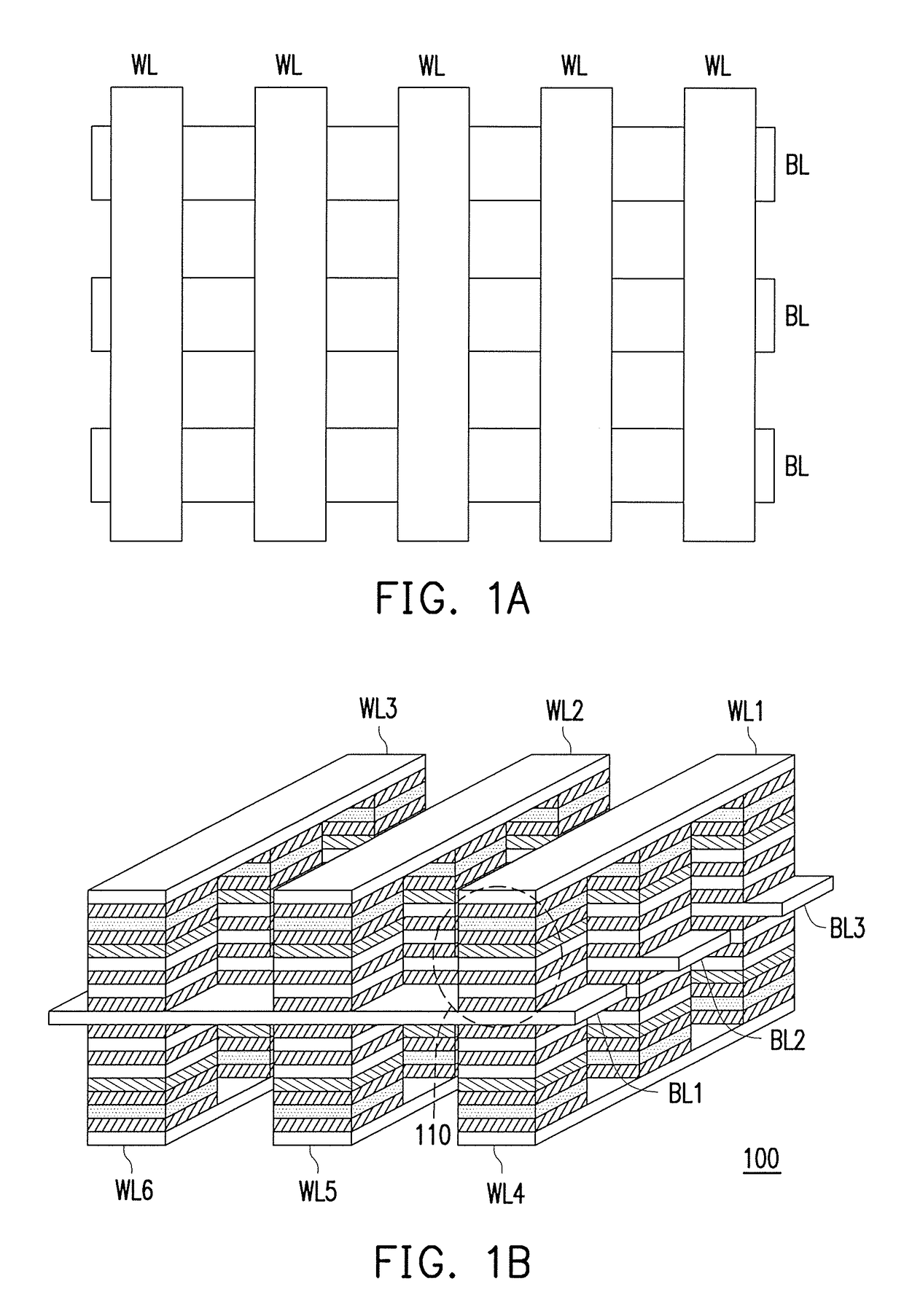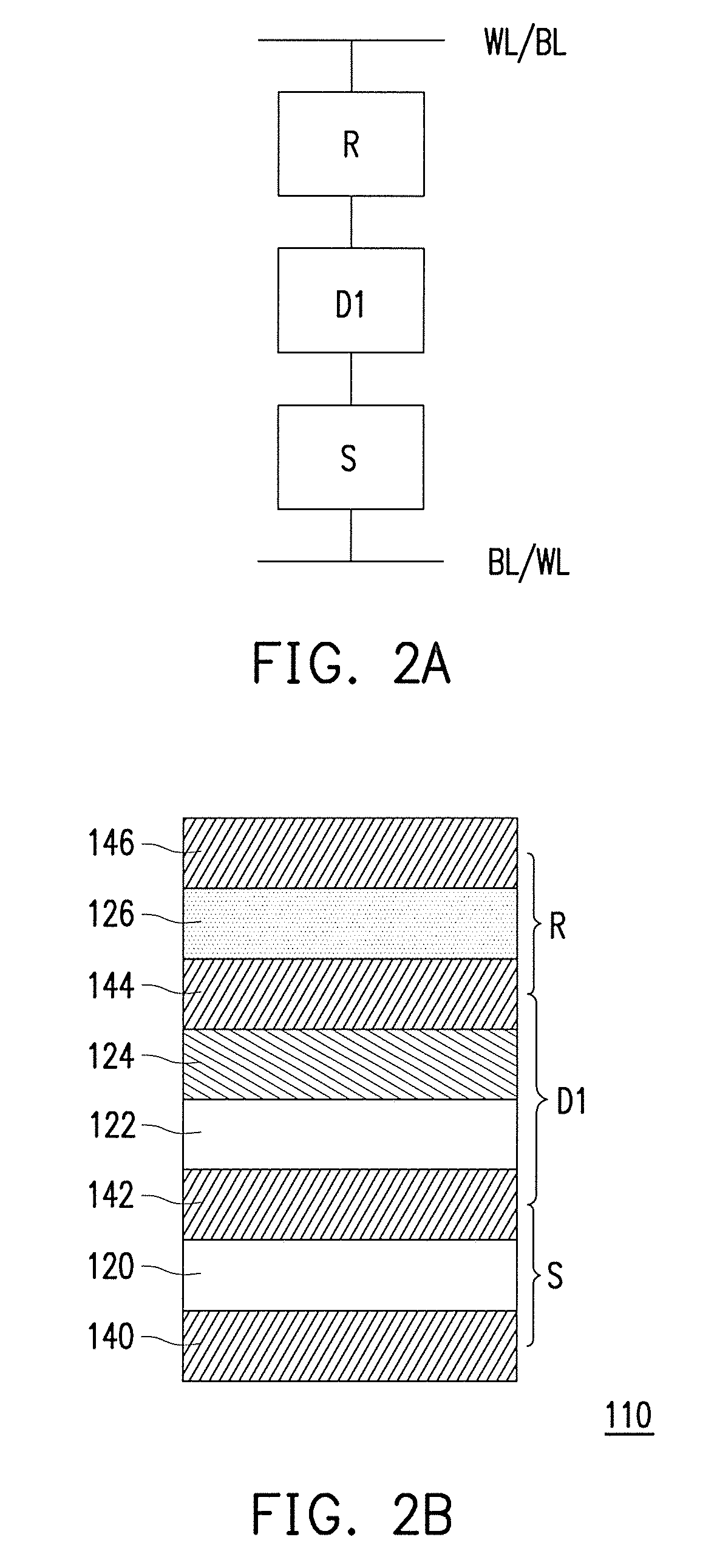Resistive random access memory
- Summary
- Abstract
- Description
- Claims
- Application Information
AI Technical Summary
Benefits of technology
Problems solved by technology
Method used
Image
Examples
first embodiment
[0054]Referring to FIG. 4A and FIG. 4B, the memory cell 110 includes the selector structure S, the current limiter structure D1, a current limiter structure D2, and the resistor structure R, wherein the current limiter structure D1 is disposed between the selector structure S and the conductive lines WL / BL, the resistor structure R is disposed between the current limiter structure D1 and the conductive lines WL / BL, and the current limiter structure D2 is disposed between the resistor structure R and the conductive lines WL / BL. The layers of each structure and materials of each layer of the selector structure S, the current limiter structure D1, and the resistor structure R are the same as the first embodiment, it will not repeat them.
[0055]The current limiter structure D2 includes a conductive layer 148, a metal layer 130, a current limiting material layer 128, and the conductive layer 146 sequentially. Materials of the conductive layer 148 and the conductive layer 146 are conductiv...
second embodiment
[0059]Referring to FIG. 5A and FIG. 5B, the memory cell 110 includes the selector structure S, the current limiter structure D1, the current limiter structure D2, and the resistor structure R, wherein the current limiter structure D1 is disposed between the selector structure S and the conductive lines WL / BL, the resistor structure R is disposed between the selector structure S and the conductive lines BL / WL, and the current limiter structure D2 is disposed between the resistor structure R and the conductive lines BL / WL. The layers of each structure and materials of each layer of the selector structure S, the current limiter structure D1, and the resistor structure R are the same as the second embodiment, it will not repeat them.
[0060]The current limiter structure D2 includes the conductive layer 150, the metal layer 130, the current limiting material layer 128, and a conductive layer 158 sequentially. Materials of the conductive layer 150 and the conductive layer 158 are conductive...
PUM
 Login to View More
Login to View More Abstract
Description
Claims
Application Information
 Login to View More
Login to View More - R&D
- Intellectual Property
- Life Sciences
- Materials
- Tech Scout
- Unparalleled Data Quality
- Higher Quality Content
- 60% Fewer Hallucinations
Browse by: Latest US Patents, China's latest patents, Technical Efficacy Thesaurus, Application Domain, Technology Topic, Popular Technical Reports.
© 2025 PatSnap. All rights reserved.Legal|Privacy policy|Modern Slavery Act Transparency Statement|Sitemap|About US| Contact US: help@patsnap.com



